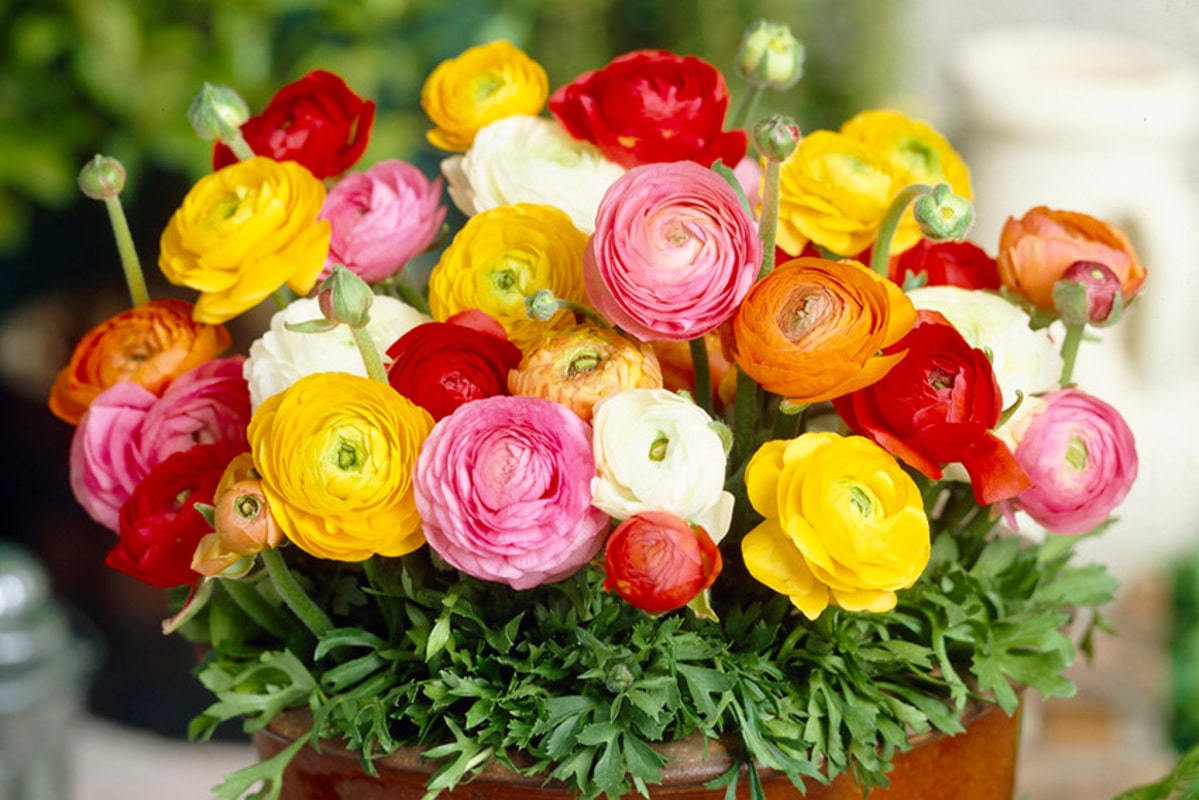Ranunculus flowers captivate with their beauty, rich palette of colors, and delicate appearance. Often compared to roses, peonies, or dahlias, they possess a unique charm that makes them stand out. These flowers are popular in floral arrangements, garden design, and landscaping projects. Below is a collection of fascinating facts about ranunculus that will help you appreciate these extraordinary plants even more.
- The name “Ranunculus” comes from Latin and means “little frog.” This name was given to these flowers because they tend to grow in damp places such as marshes, lake shores, or ponds, where frogs are commonly found.
- Ranunculus belongs to the buttercup family. This plant family includes over 600 species found across Asia, Europe, North America, and Africa.
- The most popular ornamental species is Ranunculus asiaticus. It features showy, full blooms in vibrant colors and an attractive, symmetrical shape.
- In nature, ranunculus flowers appear in almost every color except blue. You can find white, yellow, pink, red, orange, purple, and even bi-colored varieties.
- Cut ranunculus flowers stay fresh in a vase for a long time. With regular water changes, they can remain beautiful for over ten days.
- Ranunculus is a favorite flower in wedding bouquets. Their delicate petals and full shape make them ideal for elegant decorations.
- The best time to plant ranunculus outdoors is in spring or fall. Their tubers resemble tiny spider legs and should be soaked in water before planting.
- These plants thrive in well-drained, light soil and sunny locations. Excess moisture can lead to tuber rot, so proper drainage is essential.
- Most ranunculus species are toxic. It is advisable to keep them away from children and pets to avoid accidental ingestion.
- In various cultures, ranunculus symbolizes beauty, charm, and light. They are often associated with admiration for someone’s appearance or grace.
- Ranunculus can be propagated both by tubers and seeds. Seed propagation is more commonly used by breeders to create new varieties.
- In colder regions, ranunculus tubers are dug up in the fall and replanted in the spring. This allows gardeners to enjoy their blooms year after year.
- These flowers are highly versatile. They suit both classic and modern floral arrangements and pair well with roses, lisianthus, anemones, and many other blooms.
- Some varieties of ranunculus have a fragrance, although most are scentless. This makes them practical for indoor use without overwhelming a room.
- Certain ranunculus flowers may change color during blooming. For instance, a pink flower may fade into a cream shade over time.
- Ranunculus is highly photogenic. Their form and structure make them perfect subjects for photography, especially in still-life compositions.
- In gardens, ranunculus looks beautiful both in the ground and in containers. They are often planted with lavender, tulips, and hyacinths to create colorful spring displays.
- Ranunculus has also appeared in works of art. Classic painters often featured them in still-life paintings as a source of inspiration.
- In folk medicine, some ranunculus species were used for treating wounds. However, modern medicine discourages this due to their toxic properties.
- Breeders continue to develop new ranunculus varieties. Their goal is to create flowers with even more striking colors, improved durability, and unique bloom shapes.
These interesting facts about ranunculus reveal just how remarkable and diverse these flowers are. Their beauty and symbolism make them cherished in nature, culture, and the arts. Whether enhancing a garden, interior, or bouquet, ranunculus adds charm and elegance to any setting. If you appreciate aesthetics and natural beauty, ranunculus will undoubtedly win your heart.





